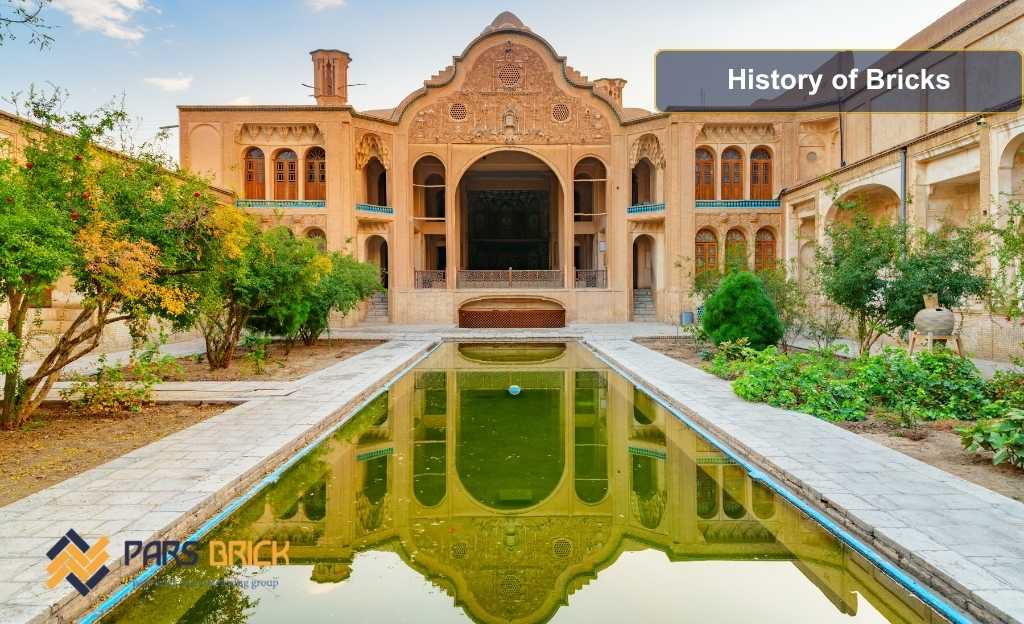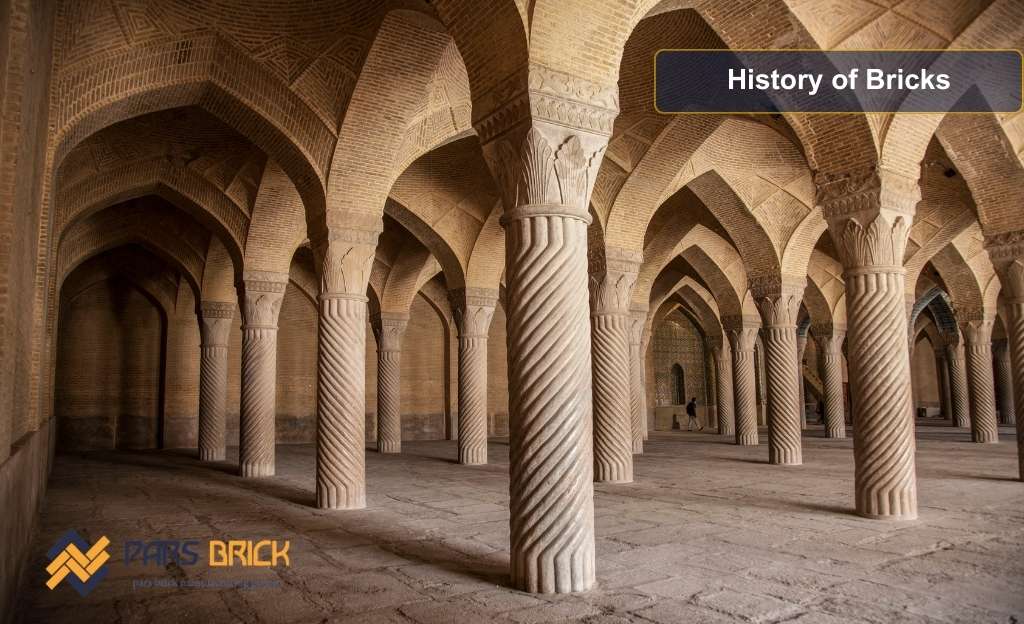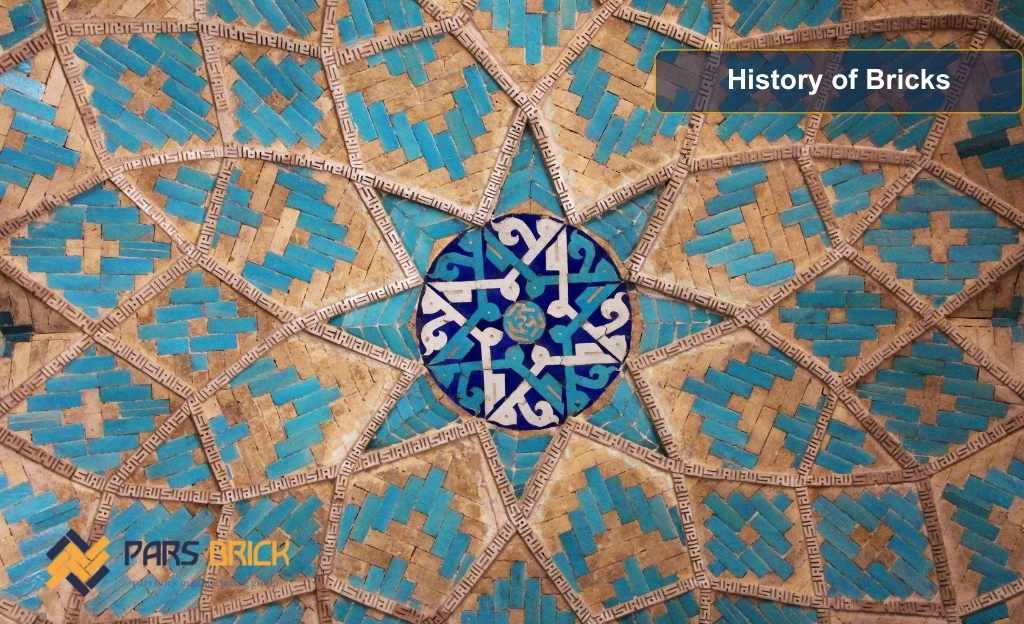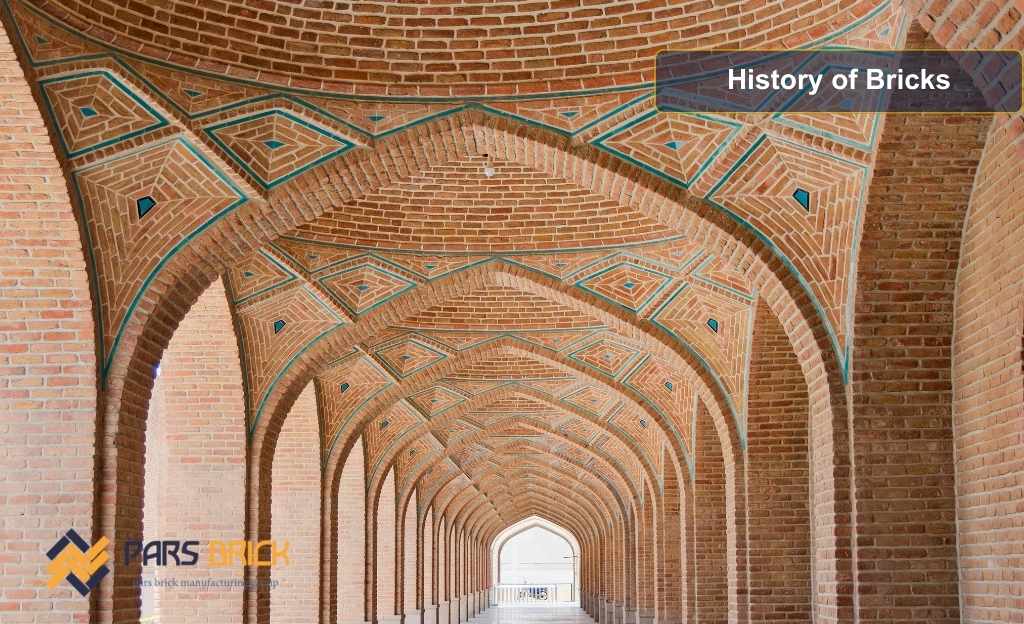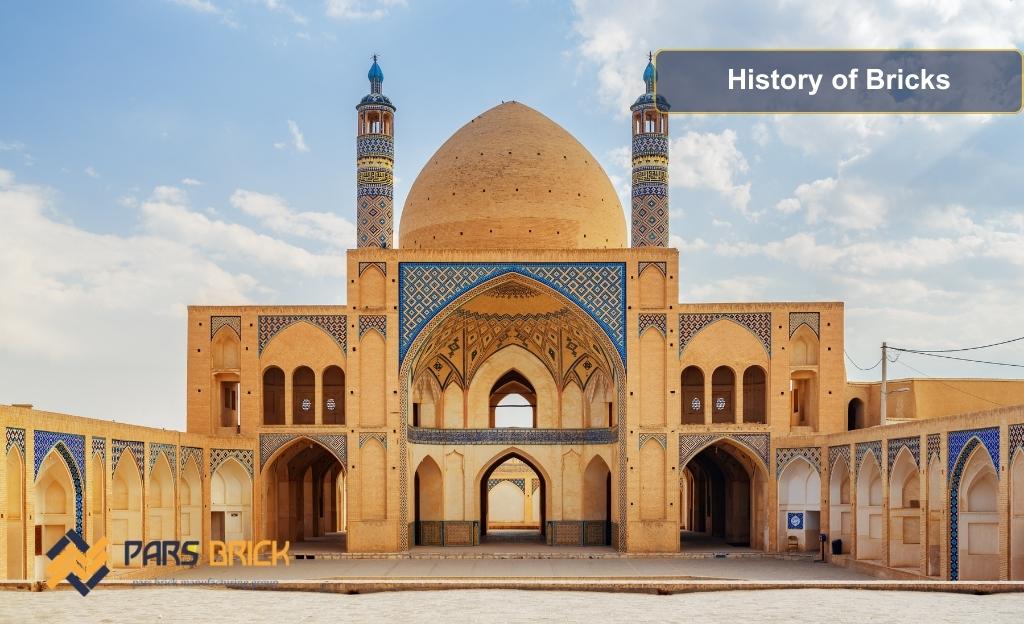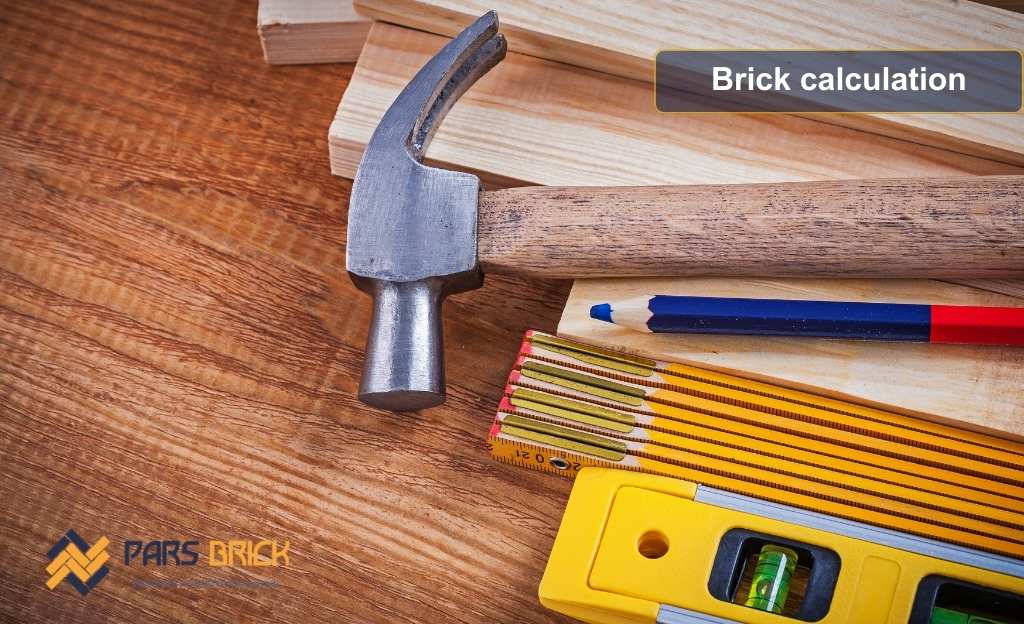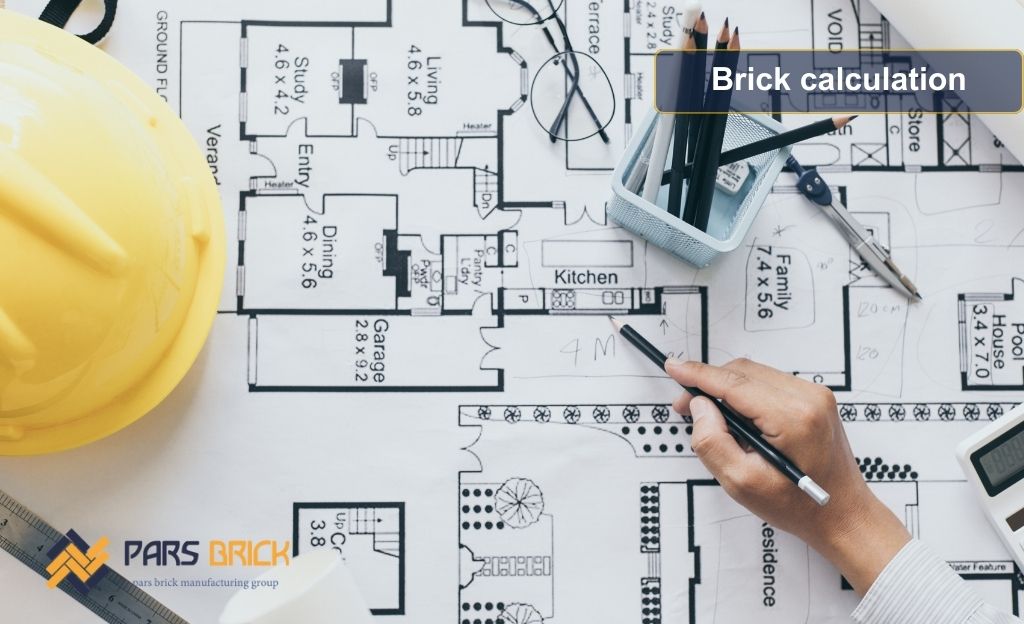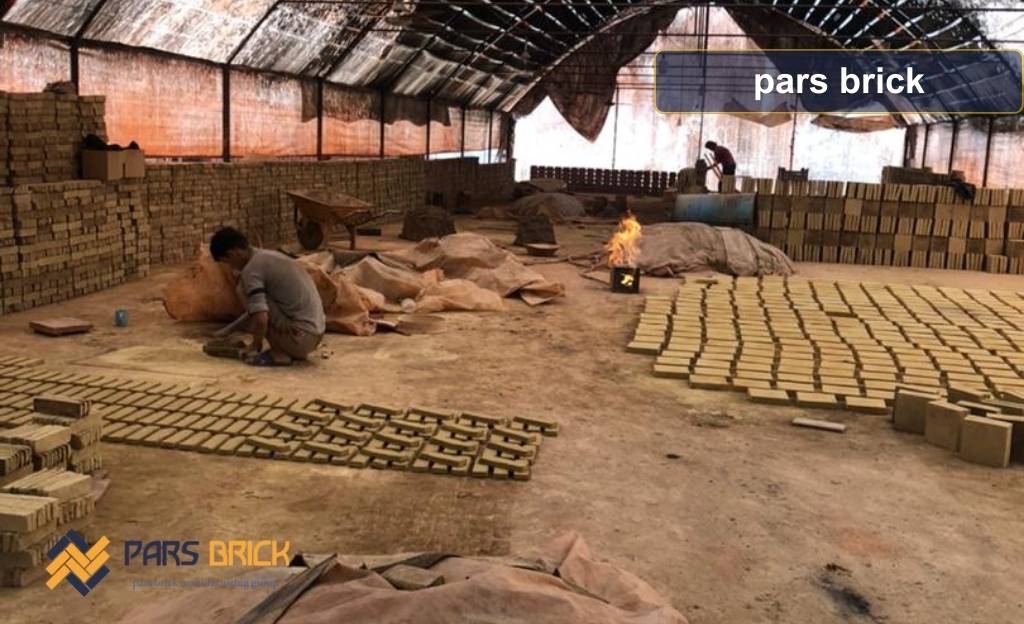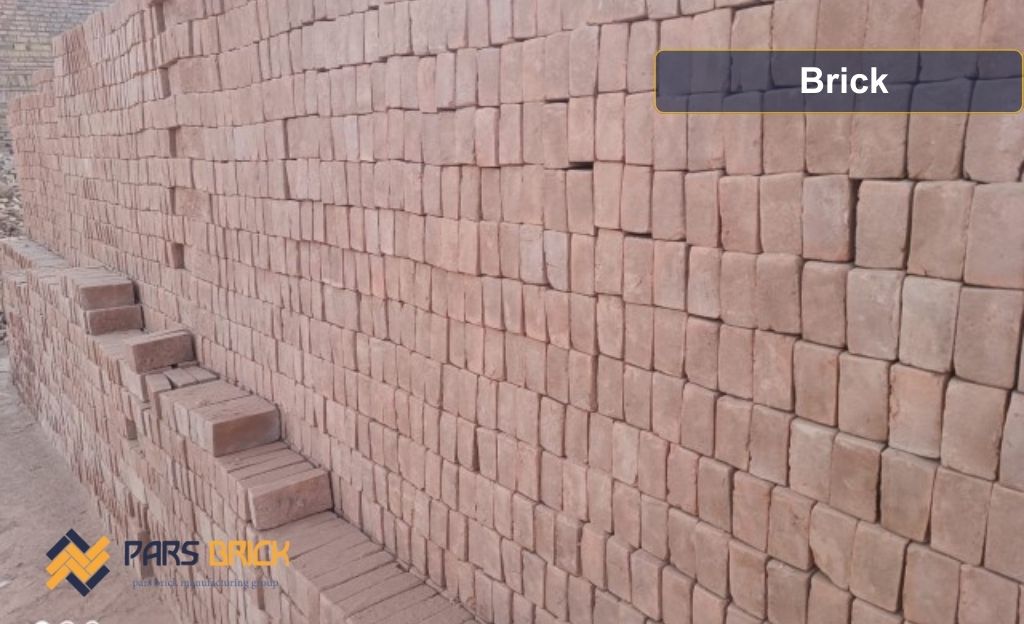Learn More About the History of Bricks
The origin of the word brick (called zaw in Afghanistan, and also referred to as ajor or agur in Persian) remains unclear. In Akkadian, it appears as agurru, in Aramaic as aggur, in Arabic as ajurr, and in Old Armenian as agur.
For more information, feel free to check out our Brick facade
The History of Handmade Bricks
The history of handmade bricks (known as ajur-e feshari in Persian) spans 7,000 years, shaped by the skilled hands of hardworking artisans. These bricks have been used to strengthen and beautify palaces, temples, schools, mosques, and buildings. However, this ancient craft is now on the verge of extinction. In the urban development of Tehran, no trace remains of the handmade brick kilns once located near Shush Square, the Old Rey Road, and Hashemabad. Yet, in Mahmoudabad, 30 tall brick chimneys from these kilns—some stretching up to 300 meters—still stand. These kilns, which ceased operation permanently in 1977, are silent witnesses to a bygone era.During the early years of the Iran-Iraq War, Iraqi planes mistakenly targeted these chimneys instead of Tehran’s oil refinery. Before the kilns were electrified, these towering brick chimneys served as ventilation and smoke outlets.
The Role of Bricks in Tehran’s Identity
Tehran, with its blend of traditional and modern identity, owes much of its architectural charm to bricks. Iconic landmarks such as Shams-ol-Emareh, Dar-ol-Fonoun, the palace museums, historic mosques, the brick buildings of Hassanabad Square, the Gate of the National Garden, the Post and Communications Museum, the Export Bank building, and the Sassanid/Achaemenid-style brick structures of the National Museum of Iran and the Ministry of Foreign Affairs all showcase the beauty of brickwork. Additionally, the Registry of Deeds and Properties building, old schools, the dome of Chahar Souq, the Grand Bazaar, smaller bazaars, caravanserais, and many homes and shops in Tehran’s older districts owe their aesthetic and historical identity to bricks.
For more information, feel free to check out our refractory bricks (fire brick)
The Ancient Use of Bricks
For at least 5,000 years, bricks made from clay have been in use. It is believed that they were first employed in the construction of cities in Mesopotamia and the Indus Valley in present-day Pakistan.Initially, people mixed clay and straw by stomping on them. The prepared mixture was then poured into rectangular molds and left to bake in the sun. Sun-dried bricks, however, could not hold their shape without the addition of straw. Eventually, the ancient peoples of Babylon, Assyria, and Egypt discovered that firing clay produced bricks that were stronger and more weather-resistant.
The History of Bricks and Their Emergence in Iranian Architecture
The history and creation of bricks date back to ancient times. According to existing evidence, the origin and use of bricks predate recorded history by thousands of years. In ancient times, along the banks of the Tigris and Euphrates rivers, seasonal floods would leave behind large deposits of mud and silt. These sediments, known for their unique adhesive properties, would dry under the sun, causing cracks to form. The dried mud would naturally break into irregular cubic shapes, which were then used as mortar for constructing mud walls during that era.Interestingly, the hardened remains of campfire pits used by nomadic herders along riverbanks became the earliest examples of fired clay. This accidental discovery of hardened clay due to fire eventually led to the invention of brick firing. Later, during the construction of the Tower of Babel, the Babylonians developed the process of molding and firing bricks, marking a significant innovation. This is why the word “brick,” derived from a Babylonian term, has become widely recognized in many languages.
For more information, feel free to check out our Traditional Brick
The Evolution of Brickmaking
Following this initial stage, the Chaldeans advanced the process of brick firing, refining the technique and improving its quality. The introduction of bricks brought about a revolution in construction, transforming buildings that had previously been made of mud and clay. This innovation paved the way for the creation of durable and brick-based structures. Early bricks were made without molds and resembled cushions in shape.
Learn More About Different Types of Bricks
The evolution of bricks not only shaped the architectural landscape of ancient civilizations but also laid the foundation for the development of more sophisticated construction techniques.
The Art of Brickwork During the Seljuk Era in the History of Bricks
During the remarkable Seljuk architectural period, bricks were used as the primary material for constructing a wide range of structures, including caravanserais, water reservoirs, royal buildings, public edifices, mosques, mausoleum towers, tall minarets, and more. Bricks not only provided a solid structural framework for these buildings but were also used decoratively, either as a separate façade (known as amoud, or cladding) or integrated into the building’s skeleton. This combination of functionality and artistry gave rise to a stunning display of creativity and craftsmanship in the art of brickwork.Throughout this period, we see extraordinary examples of brick artistry in the numerous surviving structures scattered across the country. For instance, the two towers of Kharraqan in Qazvin showcase over thirty different types of brickwork, accompanied by beautifully designed arches and intricate Kufic inscriptions in raised brick. Similarly, the Jameh Mosque of Isfahan features nearly 375 domed arches in various styles, the majority of which date back to the Seljuk era.
For more information, feel free to check out our iran brick
The Beauty of Brick Patterns and Designs
The Seljuk period witnessed the creation of some of the most exquisite brick patterns, including floral motifs, geometric designs (girih), and Kufic inscriptions. These designs adorned the tall minarets of mosques, such as the minaret of the Damghan Mosque, which stands 26 meters tall, the polygonal minaret of the Nain Mosque, rising to about 30 meters, and the Sarbān Minaret, which reaches a height of 48 meters. Among these, the Ali Mosque Minaret (formerly known as the Sanjariyeh Mosque Minaret) stands out as a masterpiece. Originally 52 meters tall, part of its top collapsed due to an earthquake, leaving it at its current height of approximately 42 meters.
The Art of Brickwork During the Ilkhanid Era in the History of Bricks
During the Ilkhanid period, brick domes and vaulted ceilings underwent significant advancements in both technique and execution. One of the most extraordinary examples of this innovation is the Soltaniyeh Dome, a stunning geometric masterpiece with a diameter of approximately 25.4 meters and a height of 50 meters from the ground. Its construction showcases an exceptional “honeycomb” technique that remains unparalleled in architectural history.The design and engineering of the Soltaniyeh Dome had a profound influence on many later domes across Europe, particularly the Santa Maria del Fiore Cathedral Dome in Florence, which was built nearly a century after the Soltaniyeh Dome. Moreover, during this era, the art of brickwork reached new heights in the intricate designs of dome interiors. Techniques such as squinches (patkaneh) and *muqarnas ornamentation were used to decorate domes and dome chambers. These decorations featured a combination of brick and tile, with exquisite patterns like interwoven horizontal and vertical bricks (khoft-o-raste) or pointed arch bricks (jenaghi), which added a unique aesthetic dimension to these masterpieces.
For more information, feel free to check out our Industrial refractory brick
Notable Brickwork Examples from the Ilkhanid Period
Among the many remarkable brick structures from this era, notable examples include the patkaneh brick patterns in the Varamin Mosque and the Great Mosque of Yazd. Additionally, the muqarnas decorations in the mihrab of the Shagerd Hall within the Jameh Mosque of Isfahan are particularly noteworthy.Another unique feature of this period was the creation of small stamped bricks (mehri bricks) in sizes like 5×5 cm and 5×10 cm, inscribed with phrases such as Jalal Allah (“The Glory of God”) or intricate geometric patterns. These small bricks were used between rows of standard bricks to create exceptional decorative effects, as seen in features like the baseboards of connecting corridors in the Mosque of Umar leading to the Shagerd Hall in the Jameh Mosque of Isfahan. Similarly, these stamped bricks were used in the balustrades of the upper levels of the Soltaniyeh Dome, contributing to its distinctive and intricate design.
The Minaret of Monar Jonban: A Masterpiece of Ilkhanid Brickwork
One of the most extraordinary examples of Ilkhanid brickwork is the Monar Jonban (Shaking Minaret). This unique structure features two slender and delicate minarets. When one minaret is set into motion, the other begins to shake as well. Remarkably, this movement extends through the entire structure, from the rooftop to the ground level. The Monar Jonban stands as a breathtaking testament to the ingenuity and precision of Ilkhanid architecture and brickwork.
The Art of Brickwork During the Timurid Era in the History of Bricks
The Timurid era was a time of remarkable growth and flourishing in various arts, particularly architecture. During this period, brick domes reached their peak of innovation and sophistication. The construction of double-shelled domes evolved significantly, transitioning from continuous double shells to disconnected double shells, incorporating unique techniques to counteract compressive, tensile, torsional, and especially lateral forces. These innovations, including the use of khashkhashi structures (a system of voids between the two layers of the dome), made the domes highly resistant to earthquakes.During this time, various types of brick vaults, such as Torkini, Goludarham, and Shamsehpoush, were perfected, achieving an ideal balance of form and function. The intricate brick patterns created during this era represent the pinnacle of brick artistry. Renowned Iranian architects, such as Qavam al-Din Shirazi and his son Ghiyas al-Din Shirazi, along with other master builders, crafted some of the most exquisite and iconic designs. These included geometric brick patterns, Kufic brick inscriptions, Banna’i script, and Muqali script, as well as stunning combinations of brick and tilework. The integration of brick and tile in suspended scripts (khat-e-mu’allaq) created breathtaking decorative effects that rivaled the finest examples of tilework.
For more information, feel free to check out our Refractory brick factory
Notable Examples of Timurid Brickwork
In Khorasan, some of the most beautiful examples of Timurid brickwork can be found, such as the Qayen Mosque and the Akhangan Mausoleum near Tus, Mashhad. These structures showcase the mastery of brick artistry during this period.Another hallmark of the Timurid era was the use of small stamped bricks (mehri bricks), measuring approximately 5×5 cm or 5×10 cm. These bricks were often inscribed with phrases like Jalal Allah (“The Glory of God”) or adorned with intricate geometric patterns. They were used between rows of standard bricks to create exceptional decorative effects. Examples of this technique can be seen in the baseboards of the connecting corridors in the Mosque of Umar, leading to the Shagerd Hall in the Jameh Mosque of Isfahan, as well as in the upper galleries of the Soltaniyeh Dome, where these stamped bricks were used to create unique and intricate designs.
The Minaret of Monar Jonban: A Timurid Masterpiece
One of the most extraordinary achievements of Timurid brickwork is the Monar Jonban (Shaking Minaret). This architectural marvel features two slender minarets. When one minaret is set into motion, the other begins to shake as well. Remarkably, this movement extends throughout the entire structure, from the rooftop to the ground level. The Monar Jonban is a testament to the ingenuity and precision of Timurid architects, showcasing their ability to combine structural innovation with artistic beauty.
The Timurid era represents a golden age of brickwork, where technical mastery and artistic creativity merged to produce some of the most stunning architectural achievements in history. These innovations not only defined the architectural identity of the period but also left a lasting legacy that continues to inspire admiration to this day.
For more information, feel free to check out our Red refractory brick
The Art of Brickwork During the Safavid Era in the History of Bricks
During the Safavid era, bricks were extensively used in the construction of numerous structures, particularly the highly advanced caravanserais of the time. These caravanserais, built both within cities and in rural areas, were often one or two stories high and featured comprehensive designs with meticulously planned frameworks. The decorative brickwork on these buildings, showcasing intricate patterns such as horizontal and vertical bonds (khoft-o-raste), basketweave, herringbone, deer hoof, floral motifs, and geometric designs, captivated the attention of the world with its beauty and sophistication.The vaulted ceilings of this period were especially remarkable, featuring stunning and intricate designs. These included domed vaults, barrel vaults, ribbed vaults, cross vaults, four-part vaults, geometric star-shaped vaults, and many others. The use of decorative brick patterns and artistic combinations of brick elements in these structures reflected the grandeur of Safavid brickwork, showcasing the era’s architectural brilliance.
For more information, feel free to check out our Red Traditional Brick Facade
Innovations in Brickwork and Decorative Elements
The Safavid period also saw the development of load-bearing and decorative arches, which were widely used in various buildings across Iran. Another notable innovation was the construction of brick dovecotes, which were designed with intricate latticework and captivating brick patterns. Additionally, muqarnas (stalactite vaulting) and karbandi (decorative ribbing) were employed in various forms, incorporating elements such as lilies, half-lilies, heptagonal shapes, open arcs, narrow bases, triangular motifs, and rosettes. These elements, combined with beautiful brick patterns, were particularly prominent in bazaars, leaving behind extraordinary examples of Iranian architectural history for the world to admire.
Notable Brick Structures of the Safavid Era
Among the many remarkable brick structures of this period are the Si-o-Se Pol (Bridge of 33 Arches) and the Allahverdi Khan Bridge. These massive and sophisticated brick bridges were designed to withstand the hydraulic pressure of the Zayandeh River, with carefully engineered foundations beneath each arch.The Safavid era also produced bathhouses with highly functional and artistic designs. These bathhouses, such as the Ganjali Khan Bathhouse in Kerman and the Khosro Agha Bathhouse in Isfahan, featured separate sections for men and women, warm rooms, and intricate karbandi vaulting supported by slender stone columns. The foundations of these columns were built on kiln-fired bricks and lime mortar, ensuring stability. Other features included water channels, drainage systems, and copper boilers placed above fire pits in the hot water reservoirs. Unfortunately, many of these architectural masterpieces were destroyed by neglect and ignorance.
Brick Cisterns and Windcatchers
Another significant achievement of the Safavid era was the construction of brick water cisterns. These structures, often adorned with beautiful brick patterns, were designed to suit various climates. In hot and arid desert regions, they were equipped with windcatchers to cool the water, combining functionality with artistic ingenuity. These cisterns stand as a testament to the Safavid architects’ ability to merge practicality with aesthetic excellence.
The Safavid era represents a golden age of brickwork, where architecture reached new heights of creativity and technical mastery. The legacy of this period continues to inspire admiration for its unparalleled artistry and innovation.
For more information, feel free to check out our Yellow traditional facade brick
The Art of Brickwork During the Afsharid and Zand Eras in the History of Bricks
During the Afsharid era, Iran was heavily engaged in military conflicts of the time, which limited the development of infrastructure and urbanization. However, this period saw the construction of numerous guide towers along roads throughout the country. These towers featured unique brickwork and intricate brick patterns, serving as landmarks and navigational aids.In contrast, the Zand era marked a period of revitalization and prosperity, particularly in the regions under the rule of Karim Khan Zand, known as Vakil al-Ro’aya (Advocate of the People). During this time, many notable structures were built, showcasing a variety of architectural styles. One of the most remarkable examples of brickwork from this period is the prayer hall (shabestan) of the Vakil Mosque, which features vaulted ceilings supported by stone columns. These columns are intricately carved with spiral designs and adorned with floral motifs on their capitals. The combination of karbandi vaulting and domed ceilings resting on these stone columns gives the prayer hall a sense of grandeur and elegance.
For more information, feel free to check out our Blended Traditional Facing Brick
Notable Brickwork in the Zand Era
Another significant structure from this period is the Vakil Bazaar, which is renowned for its beautiful brick ceilings. These ceilings are decorated with diverse brick patterns and feature symmetrical skylights and air vents, creating a harmonious blend of functionality and aesthetics.One of the most iconic brick structures of the Zand era is the Karim Khan Citadel (Arg-e Karimkhani). The citadel’s exterior is adorned with intricate brick patterns, particularly on its four massive conical towers, which are decorated with repeating grapevine motifs in a back-and-forth design. These towers not only added to the citadel’s defensive capabilities but also enhanced its visual appeal. The battlements surrounding the citadel further emphasize its protective function while contributing to its architectural beauty.
Unique Brickwork in the Zand Era
The Pars Museum, another masterpiece from the Zand period, features a unique style of brickwork with raised mortar joints. The mortar lines, which protrude about 3 millimeters from the surface of the bricks, create a strikingly uniform and elegant appearance. This technique, used in the Kolāh Farangi Pavilion (the original tomb of Karim Khan Zand), gives the structure an exceptional aesthetic that stands out among all brickwork in Iran.Additionally, the water cisterns of this era, such as those within the Karim Khan Citadel complex, are notable for their sloped, dome-shaped coverings. These cisterns are decorated with herringbone brick patterns, adding both beauty and functionality to the structures. The intricate brickwork of these cisterns, combined with their practical design, captures the attention of every visitor.
The Legacy of Zand Brickwork
Overall, the Zand era left a lasting legacy of beautiful and diverse brick patterns, which became a defining feature of Iranian architecture, particularly in the Fars region. The innovative use of brick in structures such as mosques, bazaars, citadels, and water cisterns reflects the artistic and architectural achievements of this period, offering a glimpse into the rich cultural heritage of Iran.
The Art of Brickwork During the Qajar Era in the History of Bricks
During the Qajar era, the art of brick carving and masonry flourished, with bricklayers and builders showcasing innovative and creative designs. This period saw the emergence of exquisite brick patterns in the façades of residential buildings, both exterior and interior, particularly in the ornamental entrances of homes. These entrances became a canvas for artistic brickwork, reflecting the skill and creativity of the craftsmen of the time.
Brickwork in Bazaars and Commercial Spaces
The construction of bazaars during the Qajar period was marked by the extensive use of vaulted ceilings featuring karbandi (decorative ribbing) and tasheh-style brickwork. These ceilings were adorned with intricate brick patterns, adding a unique charm to the architectural elements. Notable examples include the Grand Bazaar of Kerman, with its stunning brick ribbing, and the Bazaar of Arak, which features extraordinary tasheh-style vaulting that is both intricate and visually striking.Additionally, timchehs (covered market halls) from this era are remarkable examples of brick artistry. These structures often featured muqarnas (stalactite vaulting) and innovative karbandi designs with wide, open spaces. Examples include the Hajib al-Dawlah Timcheh in Tehran’s Grand Bazaar and the Haj Hossein Bakhshi Timcheh in Kashan, both of which showcase elaborate and eye-catching muqarnas vaulting on a grand scale.
For more information, feel free to check out our Refractory brick facade L
Brickwork in Water Reservoirs (Ab Anbars)
The water reservoirs (ab anbars) of the Qajar period represent another pinnacle of brick artistry. The domed ceilings of these reservoirs were decorated with diverse and creative brick patterns, particularly along the stairways leading to the water. The entrances of these reservoirs were often tall and elaborate, featuring brick arches, decorative spandrels, and ornamental cornices, which added a distinct beauty to the urban and neighborhood landscapes.One notable example is the Six Windcatcher Ab Anbar in Yazd, which features an ingenious ventilation system and unique brick patterns on its dome and stairways. Other examples include the Haj Ali Agha Ab Anbar in Kerman, with its beautifully patterned brickwork, and the Seyyed Esmaeil Ab Anbar in Tehran, which dates back to the Seljuk era but was rebuilt during the Safavid and Qajar periods. The latter features horizontal and vertical brick patterns (khoft-o-raste) and floral motifs on its domed ceilings and stairway walls, showcasing the evolution of brick artistry over centuries.
Decorative Elements in Qajar Brickwork
The Qajar era also introduced innovative brick vaulting techniques, incorporating elements such as open arcs (sineh baz), heptagonal shapes (hafti jam), narrow bases (pa barik), and symmetrical rosettes (toranji). These elements were often combined with triangular motifs (sambuseh) and sunburst skylights (shamseh khorshidi), creating stunning decorative effects. These designs were particularly prominent in arched doorways and vaulted ceilings, which were often supported by slender stone columns.
The Qajar era represents a period of artistic innovation and technical mastery in brickwork, where traditional techniques were refined and combined with new decorative elements. From the intricate patterns in bazaars and timchehs to the functional yet beautiful designs of water reservoirs, the brickwork of this era continues to stand as a testament to the creativity and craftsmanship of Iranian architects and builders.

